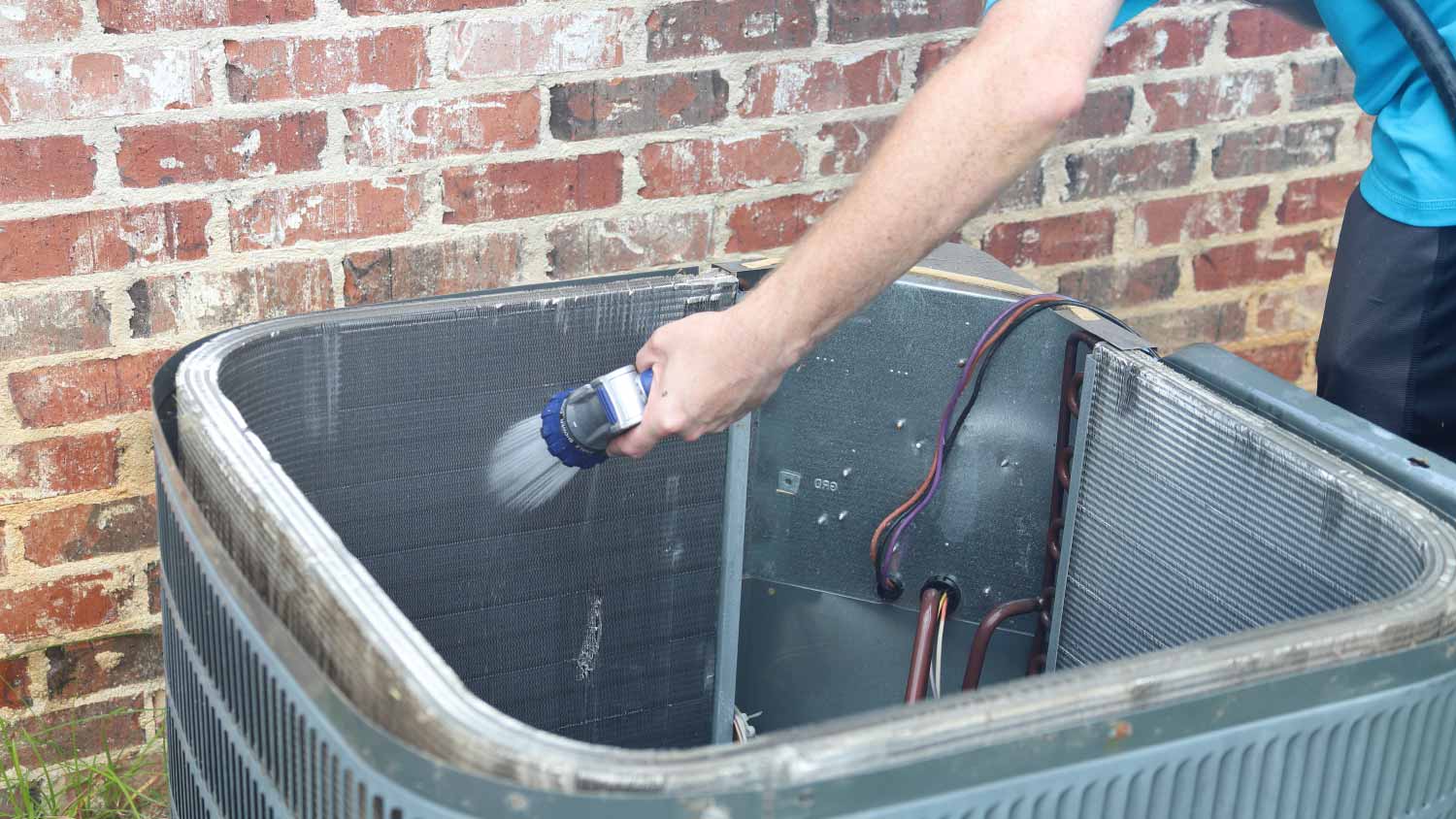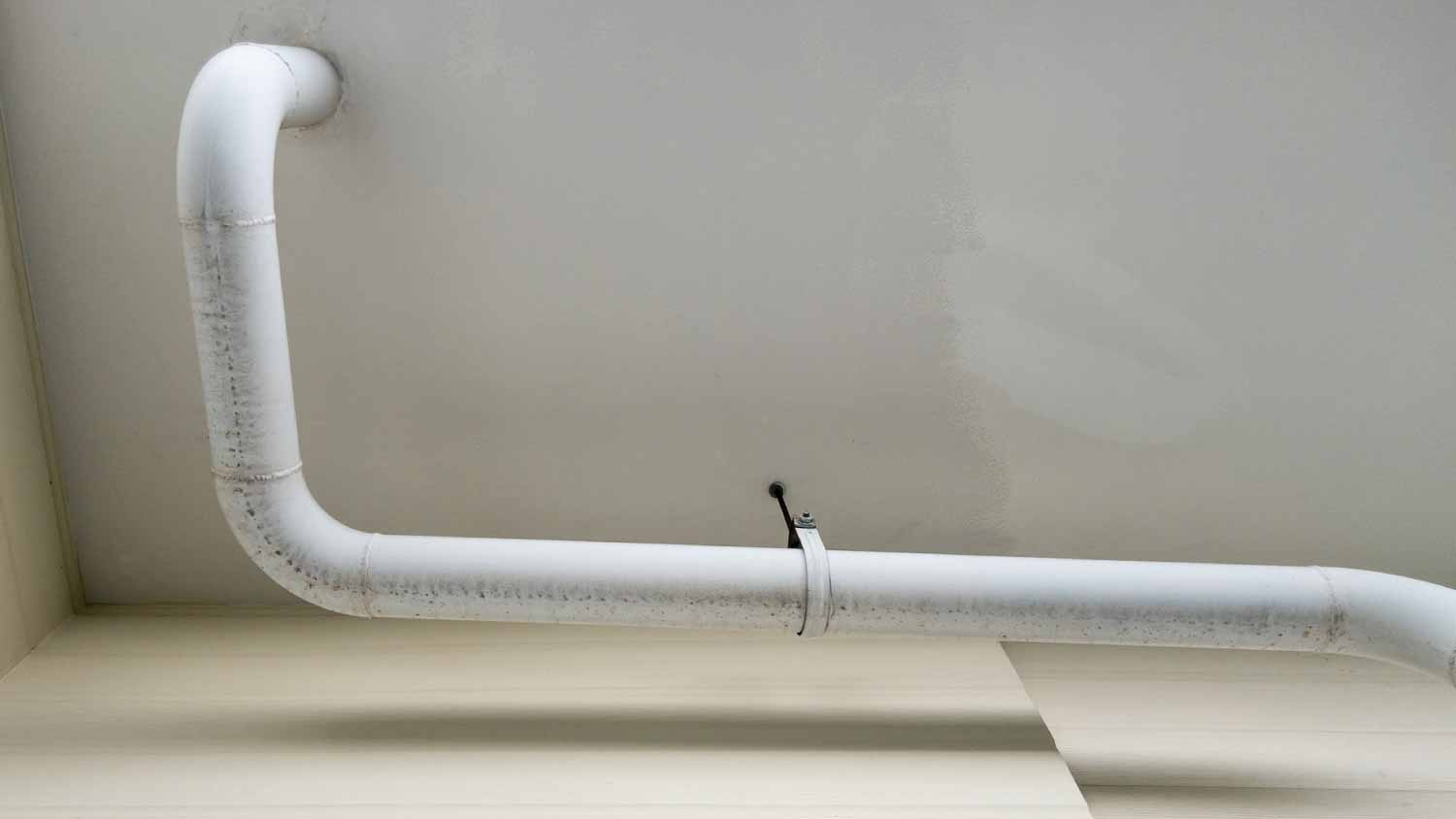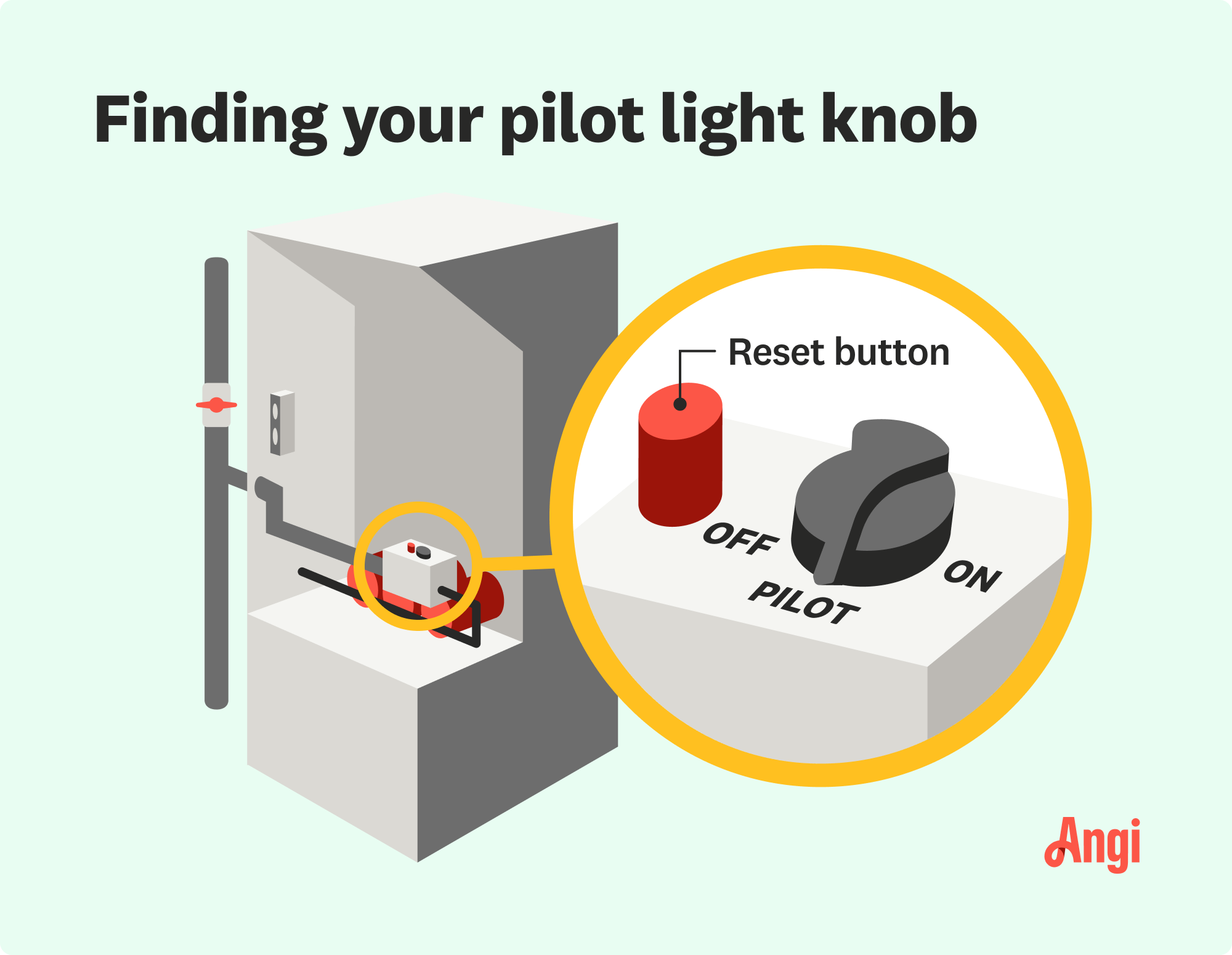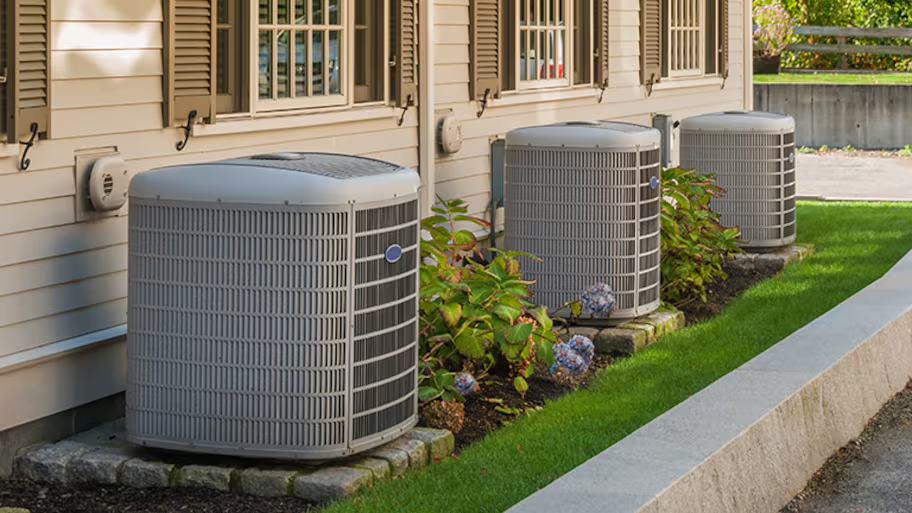
Springing for HVAC maintenance costs may seem like an extra—and easy-to-ignore—item on your checklist, but it will save you money in the long run.
Season-ready in just a few steps


Replace your HVAC air filters several times per year.
Check your coils for dust and clean them in spring as the weather warms.
Check that your pilot light is on and functioning properly as the weather grows cold.
Check ductwork for damage or signs of pests.
Arrange for annual or at least intermittent maintenance inspections with an HVAC pro.
Look no further: This is your complete HVAC seasonal maintenance guide. Your home HVAC runs quietly powers your home’s heating and cooling systems, and the only interaction most people have with it is changing the thermostat. But that doesn’t mean HVAC systems are safe to ignore. Like other appliances, they get dirty and worn out, requiring check-ins to make sure everything is working well. That’s especially important during seasonal changes when the HVAC system switches.
DIY seasonal maintenance can help your HVAC system work faster, save on electric bills, and keep your home air cleaner. Check off these 14 HVAC upkeep tips, and don’t hesitate to hire a local AC repair pro if you spot any issues during maintenance.
Proper HVAC maintenance is essential for your safety. A lack of regular professional maintenance can lead to carbon monoxide leaks, refrigerant leaks, or electrical malfunctions, which all pose a serious threat to your health and home.
The better you care for your HVAC system, the longer its lifespan will be (and less you’ll spend on repairs). Here’s how to care for your HVAC system to keep it running smoothly for longer.
Most HVAC systems use ductwork and a blower with a replaceable air filter. These filters get dirty with use, and can impede airflow (as well as letting dust and allergens escape). You should replace them about every 90 days with a compatible filter of the same size. Most filters are easy to access at the blower, and the dimensions are on the side so you can purchase the right size.
If your filters aren’t getting dirty often, you may be able to switch to replacing them twice per year. Always position the filter so its arrows are facing the direction of the airflow. If you aren’t sure which way air is flowing, think about where your home vents are when they blow out air.
Many HVAC systems heat and cool via vents found in each room. If a room isn’t in use for a certain season (too cold for the attic or no one goes in the sunroom during winter), close those vents via the mechanism on the vent grate. This step helps focus airflow on the populated rooms. When the room sees life again, open the vents to restore airflow.
Every year or two, it’s a good idea to grab a flashlight and remove a few of your ductwork vents to take a closer look inside your ducts. Look for signs of larger debris, noticeable damage, and signs of pests, like spoor or bits of nesting material. If there aren’t any major issues, consider hiring an air duct cleaning service to clear out the ductwork and reset for the next season.
Loose wires, dusty buildup behind the buttons, and faulty sensors can all cause your thermostat to go haywire, leaving your HVAC cycling frequently or not kicking on when it should. You can wipe down the thermostat and dust it at least a couple times per year, but be sure to have an HVAC pro inspect the wiring while performing a biannual HVAC inspection.
As the seasons change, make sure to check your system controls so that your heating isn’t still running when warm spring and summer days take hold or cold air isn’t blowing from the vents when winter temperatures set in.
Aside from making sure system controls are set to your liking, have an HVAC pro inspect the system’s ability to run through a full cycle. This allows a pro to catch any potential sensor or cycling problems before they become major, costly repairs.
If your region experiences hot, humid summers, moisture can linger in parts of your home, creating a risk of mildew or mold in your ducts and HVAC system. Consider buying a dehumidifier to move moisture out of the air and give your HVAC system a break when the weather gets warm and wet in spring and summer. You could also consider using a whole-house dehumidifier, which costs between $1,300 and $2,800.
Ceiling fans come with a small switch to change their direction, which can help relieve pressure from your HVAC system. In the late spring when you begin using your AC frequently, switch your ceiling fans to turn counterclockwise. This step draws the warmest air up faster and circulates it through the air conditioner, making your cooling more efficient.
When it starts to get cold in the fall, turn your ceiling fan direction clockwise instead. This method helps push warm air, which naturally rises to the ceiling, down to your household members to keep everyone warm.

Sunlight can add a surprising amount of heat to your home if you have windows that get a lot of sun. As the weather starts to cool in fall, open your blinds, curtains, or shades and let as much sunlight in as possible to help keep rooms warm. This method lessens the reliance on your HVAC system, lowering energy bills.
If the heat of summer is becoming a pain, close window dressings before the sun hits them to speed up the HVAC’s work.
If your HVAC contractor offers a maintenance plan, consider signing up for annual check-ups. Annual HVAC servicing includes a hands-on inspection from technicians who can identify hidden problems, like refrigerant leaks, soot buildup in furnaces, and damaged parts. An HVAC inspection costs between $70 and $500, but prices vary for maintenance plans.
Whether you have central air, a portable unit, or a window AC, make sure to follow this checklist for seasonal AC maintenance.
Refrigerant is responsible for absorbing heat so that the AC unit can cool your home. But refrigerant levels can deplete if there’s a leak in the system. You’ll need to call in a pro to check the HVAC system’s refrigerant levels.
Don’t attempt to check refrigerant levels yourself, though. This is one chore you should be happy to hand over to a vetted AC pro. AC refrigerant is considered toxic and flammable, and exposure can increase the risk of asphyxiation, according to the U.S. Environmental Protection Agency.

HVAC systems contain evaporator coils and condenser coils, which are sets of metal pipes that help exchange heat with the air. Over time, the coils can get dusty or grimy, especially the condenser coil since it's in the outdoor unit. That makes it harder for heat to pass through and slows down the function of the unit.
It’s best to clean off the AC coils and ensure they’re dust-free. Keep in mind that this task requires tampering with the inner workings of the HVAC unit, which is best left to a pro. If you choose to DIY this project, access the coils by shutting down your HVAC power and opening the AC panel. A clean cloth and water (possibly a mild detergent) is enough to clean the coils. For a light coating of dust, use your garden hose on the outdoor unit and wash it down using one of the lighter spray settings.

Dirt, debris, and leaves can block important drains in AC units (called condensate drains) and other parts of the AC system. Ahead of spring and after the rainy months of fall and winter, check your drainage and ensure everything is clear. Clean away debris from your outdoor unit and check that plants are growing too close to it and nothing is covering the top of the unit.
Your furnace requires regular TLC to ensure it heats your home, even when temperatures drop below freezing. Add these tasks to your calendar to keep your home comfortably warm all winter long.
If your HVAC system uses a boiler for heating, ensure it’s properly insulated ahead of winter so that the water is never in danger of freezing. Likewise, you should inspect insulation in other important areas of your house to check whether air is leaking into your home.
Take a look at the weather stripping along your doors and windows. If it's missing or bare, that’s a sign that you should replace it. Check the attic for unnoticed cracks or gaps that need additional insulation. Even small drafts can make your HVAC system work harder to heat or cool your home, making your system less efficient.

Many furnaces (and gas fireplaces) use pilot lights to ignite the primary gas line. If your system uses a pilot light, it’s a good idea to check that it’s on and is bright blue, indicating a healthy ignition system. Some people prefer to switch off the pilot light during the summer months to save on gas and residue buildup. Either way, check the pilot light before you use your furnace again.
From average costs to expert advice, get all the answers you need to get your job done.

Springing for HVAC maintenance costs may seem like an extra—and easy-to-ignore—item on your checklist, but it will save you money in the long run.

HVAC replacement costs depend on a lot of factors, like unit type, size, and labor. See what you can expect to pay for HVAC replacement here.

Getting AC and furnace replacement done at the same time can lead to huge benefits for your wallet and your home. Here’s everything you need to know.

Your return air vent is responsible for removing warmer air, so testing it ensures you keep your environment comfortable and there are no HVAC problems.

Save energy and prolong the life of your heating pump with proper maintenance and preventative care. An annual service will keep things running smoothly.

Are you considering adding a whole-house humidifier to your home? Keep reading to learn the pros and cons of a whole-house humidifier.